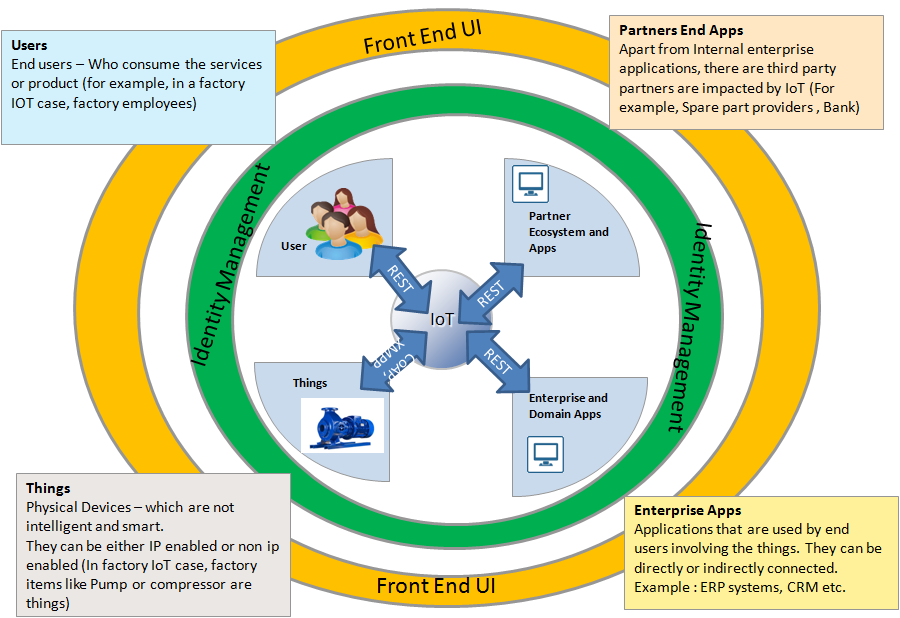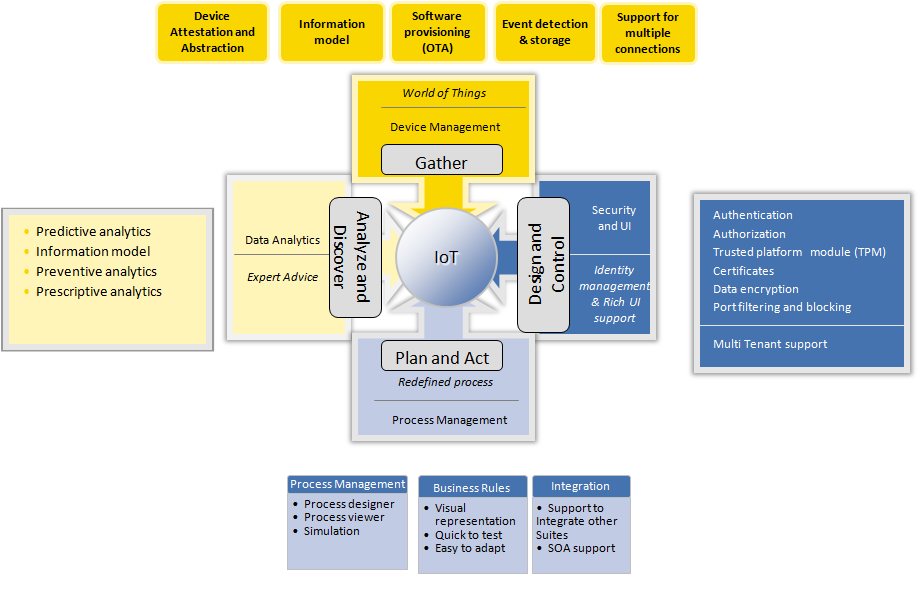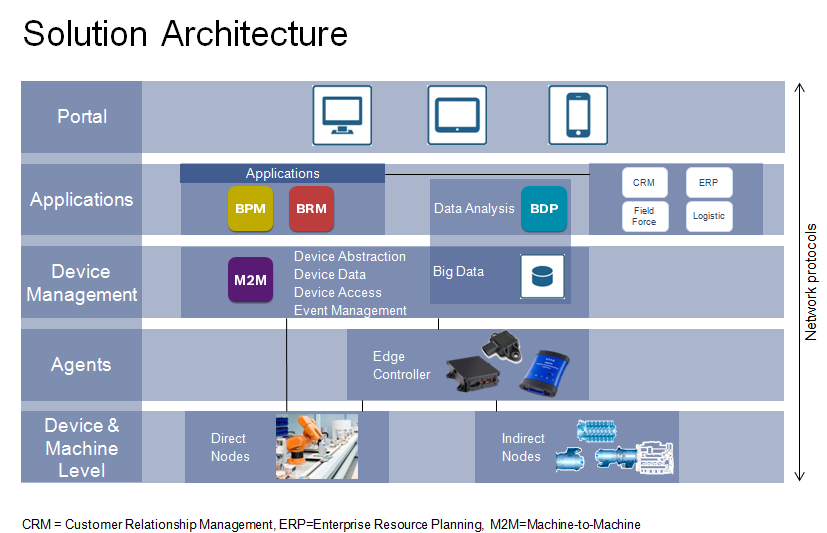Drone’s eye view of IoT platforms
Drone’s eye view of IoT platforms-Ok, Let me explain the title at the end.
Target focused audience:
Business relationship managers, Solution architects, designers and developers.
This blog is about analysis of Internet of things platforms. High-level definition of IoT is “Deriving intelligent insights from devices(things) by collecting the sensory data from them and connecting them to Internet.”
From the definition, one can understand the importance of IOT and its anticipated disruption in all five digital forces – Social, Mobility, Big data , Cloud and Robotics.
The focus of this blog is about “What are the major items that are severely impacted by IoT and how”
They are
Users
Things
Enterprise applications
Partner ecosystem
To explain this concept,let me take an example.
In normal surveillance case of building, security guards are employed at the gates. They will take random rounds and check for intrusion. Security guards follow shift systems to cover 24 *7 operation.
The same case under IoT will be redefined like this:
1. Surveillance cameras will be set up with different places
2. Motion detection sensors may be instilled on top of the compound walls
3. Cameras are connected to Central server and notifications will be sent to mobile phones of security guards
This Operation has become more efficient and easily manageable.
In this example case, Users are – Building users ,security guards, Building society and Security administrators.
Things are Camera and compound walls
Enterprise applications are Security shift system, alert speaker system
Partner ecosystem may be near by Police stations and neighbour buildings
Picture above explains all four components with their definitions.
All the IOT cases will have these four components : Consider another example of Usage based insurance for drivers.
Here drivers are the users, OBD system is thing, Insurance premium calculation service is Enterprise app and Ambulance system in case of accidents can be partner ecosystem.
In an industry iOT case of factory, users are employees of factory, things are industry component (may be pump or compressor), enterprise systems are CRM and partner ecosystem is spare part provider.
So, Any IOT platform to be successful, it needs to touch and interact with all four components – user,thing, enterprise app and partner ecosystem. Apart from these four, strong UI and secured identity management components are required.
Let us explain this using another picture.
IOT system forms new word – Connected world. This world comprises four parts
World of users
World of things
World of apps
World of connectivity
All four have different expectations and requirements making the IOT world very complex.
Users expect quick response (Through Rest calls using JSON) on different devices such as Mobile phones, tablets, desktops and laptops.
While things expect the support of connectivity of Industry protocols such as RS 485, RS232, UART, zigbee, bluetooth, Zwave etc..
Both enterprise and partner applications expect webservices exposure to make API calls through REST or SOAP.
Where as Connectivity providers such as Verizon or AT&T expect different conditions from IoT. Their requirement billing support and easy identification to support subscription based model.
All four worlds demand Secured connections using certificates and TPM
To explain more about IOT system, consider the picture below which talks about
Gather data from Sensors in secured way
Plan and Act – How processes and rules are impacted
Analyze & Discover- Data analytics to derive intelligent decisions
Design and Control – This part is about designing IoT system and ensuring Controlled access
Let us begin with Device management component:
Essentially this is new component of IOT system as compared with other prior IT systems or application.
Gathering the real-time insights from dump things is the major goal of this module. Gathering has to be done in scientific way and stored in systematic way to avoid data from many things.
For example, consider a refrigerator or vending machine IoT case, there can be many types, many vendors and many observed properties. So having proper information model based on domain is critical to gather operation.
Apart from collecting and sending sensor data, there is a need to get updates from central server like updates (similar like OTA -Over The Air updates to mobile)
event detection and notification is handled in Event management modules
Identity management component:
Users need different types of authorization required. Authentication, authorization and accounting details are performed in this module. Based on the needs, certificate and encryption is added to the components.
Analyze and Discover
Using device management huge amount of data (time series) is collected. These small data (as there is no major variety) need to analyzed and predicted for known patterns. Data models of the use cases will help the benchmarking and knowing error patterns. Predictive and preventive analytics is carried out on data.
Process management
IoT makes dynamics changes in the business processes. So existing processes need to be refined and carried out. Rules need to be reconfigured to suit new scenarios. Process engine and choreographing the processes happens here to make new business model to work.
Knowing importance of the IOT platform and its potential, almost all the players in the value chain made their own platforms.
Chip manufacturers, gateway vendors, communication service providers, hardware vendors and ERP vendors .
Below picture explains various players who have IoT platforms. The list is indicative and many more being added at constant rate.

With so many ready made platforms available, it is very difficult to choose the best one.
I would suggest below parameters to be considered for making a choice:
1. Security requirements of the use-case (from both Things and User perspectives)
2. Scalability of the solution
3. Payment and billing option to support subscription based model
4. Support for end to end value chain
5. Incumbent software stack
Just to give one snapshot of one such IOT platform, Given below is the solution architecture of Bosch IoT suite
Generally “overview” is the title being used for such blogs. However overview is high-level view at 35000 feet(flight’s altitude). Since I covered bit more details, I thought of titling it as Bird’s eye-view. Since birds are now getting extinct and Drones are being used for taking aerial view photos now days, I titled the blog as Drone’s eye-view of IoT platforms.







